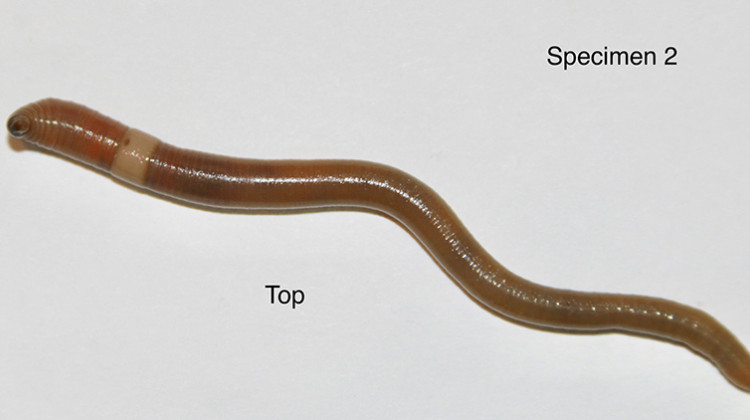
Purdue researchers are trying to stop the spread of Asian Jumping Worms - an invasive earthworm that strips nutrients from the soil. (Photo courtesy of Purdue University)
Photo courtesy of Purdue UniversityPurdue University researchers warn that invasive “jumping earthworms” are a problem that’s spreading.
These earthworms are more destructive than other earthworms and can strip the top layer of soil of nutrients.
Bob Bruner is an exotic forest and pest specialist with Purdue Extension.
“When that nutrition gets stripped out, it may not immediately kill everything growing there – but it may not come back the next year,” he said.
Researchers say as people turned to gardening during the pandemic, it exacerbated the spread of invasive jumping earthworms.
Bruner said the worms are mostly moved through human activity, leaving it up to humans to stop their spread.
“What’s happening is they’re moving because of us,” he said. “We’re moving them in plants or soil that’s been contaminated.”
Because of this, Bruner recommends gardeners source their soil so they know where it’s coming from. The other thing people can do is “solarize” the soil bags that they buy from the store by leaving bags out in the hot sun, which kills the worms and their eggs.
There are few native worms left in Indiana, but the European worms that people are more familiar with do not have a negative impact on soil – and are instead important to fertilize it. European worms are especially good at creating channels deep into the soil where water and air can flow.
Jumping earthworms wriggle like snakes when held and have light rings around their bodies close to their heads.
Bruner said researchers will be working this summer to determine where in Indiana the worms have spread. There isn’t a clear picture right now of where the worms are located across the state.
“We are begging people to please report when you see these,” he said.
Bruner recommends people visit reportinvasive.com to document sightings of the invasive worms.
9(MDAyMzk1MzA4MDE2MjY3OTY1MjM5ZDJjYQ000))
 DONATE
DONATE






 Support WFYI. We can't do it without you.
Support WFYI. We can't do it without you.